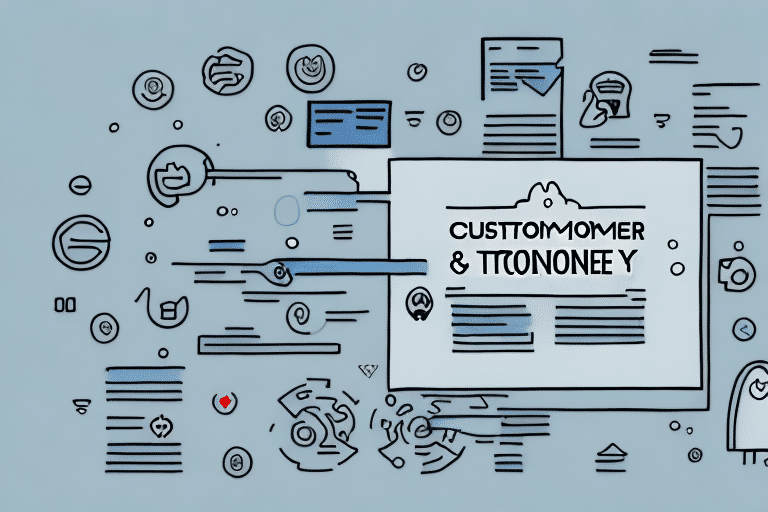Maximizing Customer Retention and Deletion Strategies
In today's competitive business landscape, customer retention and deletion strategies are crucial to maintaining a profitable business. Customer retention refers to the practice of keeping existing customers happy and engaged, while deletion strategies focus on identifying and removing unprofitable customers. Both types of strategies play an integral role in securing a loyal customer base, maximizing revenue, and ultimately driving business success. In this article, we'll explore why customer retention and deletion strategies are important, as well as best practices for implementing them effectively.
Understanding the Importance of Customer Retention
Why Customer Retention Is Key to Business Success
Customer retention is essential to a company's longevity and growth. According to a study by Investopedia, retaining customers is significantly more cost-effective than acquiring new ones. By retaining existing customers, businesses can reduce costs associated with acquiring new customers, such as marketing and advertising expenses. Satisfied customers are more likely to recommend your products or services to others, increasing revenue and brand awareness.
- Cost Efficiency: Reduces marketing and acquisition costs.
- Revenue Growth: Loyal customers contribute to higher lifetime value.
- Brand Advocacy: Satisfied customers act as brand ambassadors.
Loyal customers are less likely to switch to competitors and are often more forgiving of occasional mistakes or issues. Therefore, a strong customer retention strategy can lead to increased profitability, lower churn rates, and a positive impact on a company's bottom line.
Types of Customers and Their Needs
Not all customers are created equal, and it's essential to understand the different types of customers and their specific needs. For instance, some customers might be price-sensitive, while others prioritize quality or convenience. By segmenting customers based on their unique characteristics and preferences, businesses can tailor their retention strategies to meet their specific needs. Forbes highlights the importance of market research and customer surveys in gaining valuable insights into your customer base.
- Price-Sensitive Customers: Focus on affordability and value.
- Quality-Oriented Customers: Emphasize superior product quality.
- Convenience-Seeking Customers: Highlight ease of use and accessibility.
Implementing Effective Retention Strategies
Leveraging Data to Improve Customer Retention Rates
Data is an essential component of any customer retention strategy. By analyzing customer data, businesses can uncover trends in customer preferences, behaviors, and engagement levels. According to a report by McKinsey & Company, data-driven companies are 23 times more likely to acquire customers, six times as likely to retain them, and 19 times as likely to be profitable.
One way businesses can leverage data is by implementing personalized marketing campaigns. By analyzing customer data, businesses can create targeted campaigns that speak directly to the customer's interests and needs, leading to increased engagement and loyalty.
Predictive Analytics
Another benefit of leveraging data for customer retention is the ability to predict customer behavior. By analyzing past behavior and engagement levels, businesses can predict which customers are at risk of churning and take proactive measures to retain them. This can include offering personalized incentives or reaching out with targeted messaging to address their concerns.
Personalization: The Key to Customer Loyalty
Personalization is becoming increasingly important in retention strategies, as customers seek more customized experiences. By providing personalized offerings based on customer data, businesses can increase engagement and loyalty levels. This ranges from targeted marketing and retention offers to customized product recommendations, loyalty programs, and more.
- Targeted Marketing: Tailor messages to individual customer preferences.
- Customized Recommendations: Suggest products based on past behavior.
- Loyalty Programs: Offer rewards that resonate with customer interests.
Offering a unique experience tailored to each customer's preferences helps build long-term relationships and fosters a sense of loyalty.
Managing Customer Churn Effectively
Identifying Reasons for Customer Churn
Customer churn occurs when customers stop doing business with a company, and it's often an indicator that something is not working. Identifying reasons for churn requires a careful analysis of customer behavior and feedback. Common reasons include:
- Poor customer service
- Price increases
- Lack of product innovation
- Insufficient personalization
Understanding these factors allows businesses to address the underlying issues and implement strategies to reduce churn.
Effective Deletion Strategies for Unprofitable Customers
While customer retention is key, deletion strategies are equally important. Not all customers are profitable or valuable, and sometimes it's necessary to end the relationship. Effective deletion strategies involve:
- Analyzing Customer Data: Identify churn trends and profitability thresholds.
- Proactively Ending Relationships: Address unresponsive or consistently unprofitable customers.
- Streamlining Operations: Focus resources on the most valuable customers.
A well-executed deletion strategy can help reduce costs and increase profitability by focusing on the most valuable customers.
Balancing Retention and Deletion for Optimal Profitability
Cost-Benefit Analysis
Implementing retention and deletion strategies involves balancing the costs and benefits of each approach. Retaining customers often requires additional resources, such as customer support and personalized marketing, while deletion strategies necessitate careful analysis of customer behavior to identify unprofitable relationships.
By conducting a cost-benefit analysis, companies can determine the most effective mix of retention and deletion strategies to maximize profitability.
Developing a Retention-Deletion Strategy
Creating a balanced strategy involves:
- Setting clear criteria for customer retention and deletion.
- Allocating resources effectively to support both strategies.
- Regularly reviewing and adjusting strategies based on performance data.
By finding the right balance, businesses can optimize their approach to customer retention and deletion, ensuring sustainable growth.
Continuous Improvement of Retention and Deletion Strategies
Ongoing Evaluation and Adjustment
Retention and deletion strategies are not set-it-and-forget-it approaches. They require ongoing evaluation and adjustment to ensure they remain effective in a changing market landscape. Companies need to stay up-to-date on industry trends, customer preferences, and engagement levels to ensure their strategies are relevant and effective.
Implementing a feedback loop allows businesses to:
- Monitor the effectiveness of current strategies.
- Incorporate customer feedback to refine approaches.
- Adapt to emerging trends and technologies.
Leveraging Technology for Enhanced Retention and Deletion
Utilizing Customer Relationship Management (CRM) Systems
Technology can significantly enhance retention and deletion strategies. Implementing Customer Relationship Management (CRM) systems helps manage customer interactions and track engagement levels effectively. CRMs enable businesses to:
- Store and analyze customer data.
- Automate marketing and communication tasks.
- Personalize customer interactions based on data insights.
Incorporating Machine Learning and Predictive Analytics
Advanced technologies like machine learning and predictive analytics can predict customer behavior, identify at-risk customers, and suggest proactive measures to enhance retention. According to a report by Forrester, businesses leveraging predictive analytics for customer retention see a significant increase in loyalty and revenue.
Learning from Success: Case Studies
Amazon: Mastering Customer Retention
Amazon is an excellent example of a company that has mastered customer retention by providing personalized recommendations, fast and free shipping, and outstanding customer service. Their Amazon Science division focuses on leveraging data and machine learning to enhance the customer experience continuously.
Netflix: Implementing Effective Deletion Strategies
Netflix employs effective deletion strategies by regularly assessing and removing accounts that are inactive or pose a risk to profitability. Their data-driven approach ensures that resources are focused on maintaining a high-value customer base, thereby optimizing operational efficiency.
Conclusion: Building a Stronger, More Loyal Customer Base
In conclusion, customer retention and deletion strategies are crucial to building a strong and profitable business. By understanding the different types of customers and their needs, identifying reasons for churn, leveraging data, and offering personalized experiences, businesses can increase customer engagement and loyalty. Additionally, by implementing effective deletion strategies and finding the right balance between retention and deletion, businesses can optimize their approach to customer loyalty while maximizing profitability. Advancements in technology offer businesses new tools to enhance retention and deletion strategies, and continuously evaluating and adjusting them can lead to long-term success.




















